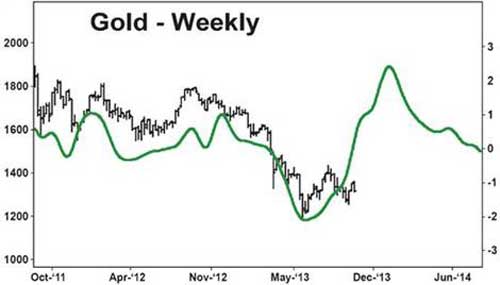Bonds & Interest Rates
European Central Bank Governing Council member Ardo Hansson said the ECB stands ready to cut borrowing costs further and is technically prepared to make its deposit rate negative.
“The options on rate cuts are still not fully exhausted and there are all kinds of other measures that are still on the table,” Hansson said in an interview in Tallinn on Nov 22. “Of course, every time you use one option, you have one less to use. But I don’t see us, by any means, running out of our toolkit of things we can draw on.”
The Frankfurt-based ECB, fighting a slowdown in inflation that threatens to undermine the euro area’s recovery, cut its main refinancing rate by a quarter percentage point to a record low of 0.25 percent this month. Bloomberg News reported last week that policy makers are considering a smaller-than-normal cut in the deposit rate, currently at zero, to minus 0.1 percent if more stimulus is needed.
“We are technically ready” to reduce the deposit rate, said Hansson, who also heads Estonia’s central bank. “We’ve had a tradition of using those 25 basis points so I’d have to look at some analysis of different options. Theoretically, a smaller cut wouldn’t be off the table. Certainly, the bigger the move, the more impact you have.”
…..more HERE

The Bottom Line
Economic sensitive sectors with strong positive seasonality traits (e.g. Industrials, Consumer Discretionary, Technology and Materials) are leading equity markets on the upside. Preferred strategy is to accumulate equity markets and sectors with favourable seasonality on weakness in order to take advantage of the October 28th to May 5th period of strength.
Equity Trends
The S&P 500 Index added 6.58 points (0.37%) last week. Trend remains up. The Index closed at an all-time high. The Index remains above its 20, 50 and 200 day moving averages. Short term momentum indicators remain at overbought levels.
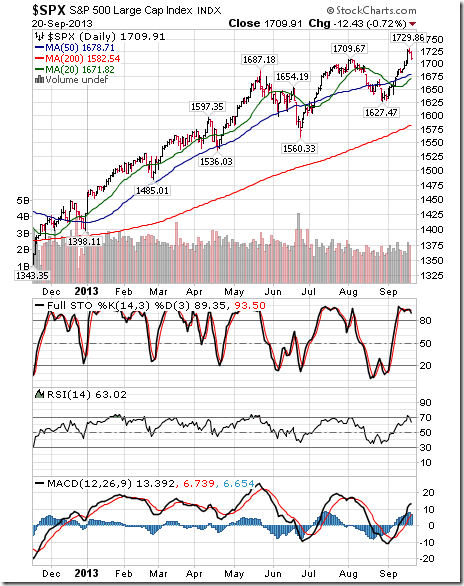
Percent of S&P 500 stocks trading above their 50 day moving average slipped last week to 78.20% from 82.80%. Percent remains overbought.
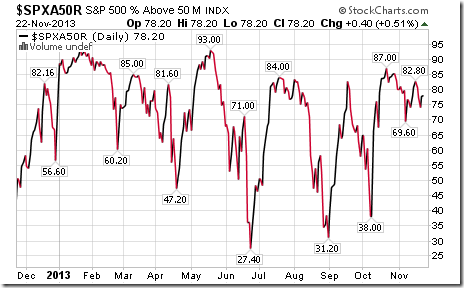
Percent of S&P 500 stocks trading above their 200 day moving average slipped last week to 84.40% from 85.60%. Percent remains intermediate overbought.
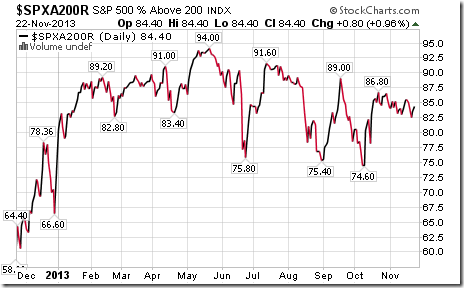
Bullish Percent Index for S&P 500 stocks increased last week to 83.80% from 83.40% and remained above its 15 day moving average. The Index remains intermediate overbought.
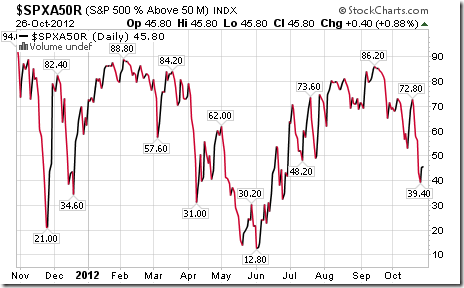
The TSX Composite Index slipped 4.23 points (0.03%) last week. Trend remains up (Score: 1.0). The Index remains above its 20 day moving average (Score: 1.0). Strength relative to the S&P 500 Index remains negative (Score: 0.0). Total score based on the above technical indicators remains at 2.0 out of 3.0. Short term momentum indicators remain overbought.
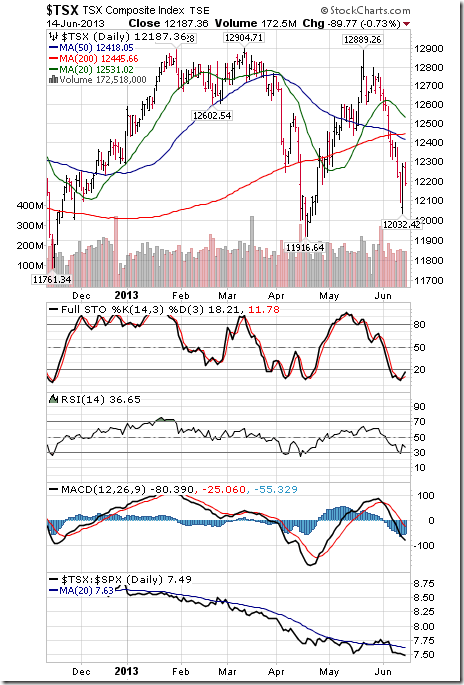
Percent of TSX Composite stocks trading above their 50 day moving average slipped last week to 58.58% from 62.76%. Percent remains intermediate overbought with a downward bias.
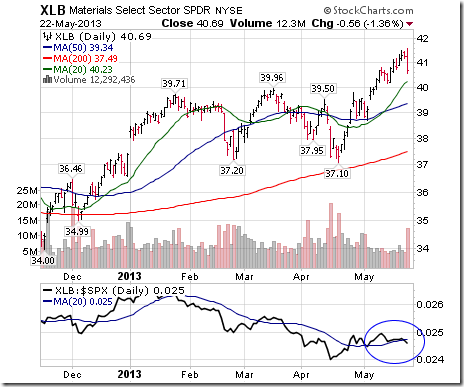
Percent of TSX Composite stocks trading above their 200 day moving average slipped last week to 56.90% from 57.74%.Percent remains intermediate overbought with a downtrend.
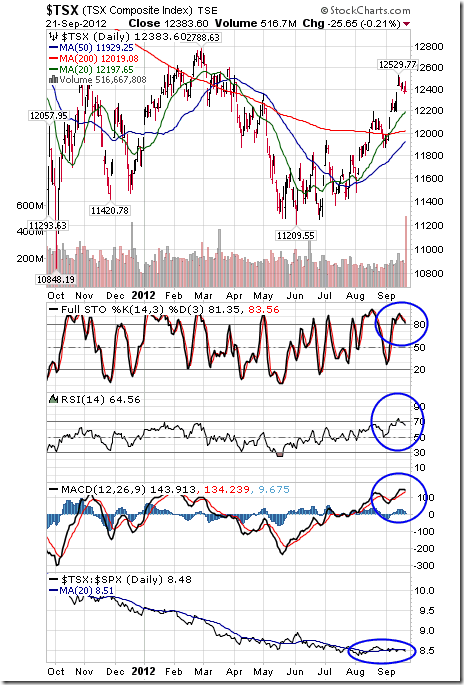
….read and so much more as 34 more charts & other issues are studied in this detail HERE

October Housing Starts to be released at 8:30 AM EST on Tuesday are expected to increase to 915,000 from 891,000 in August.
September Case/Shiller 20 City Home Price Index to be released at 9:00 AM EST on Tuesday is expected to increase 13.0% from 12.8% in August
November Consumer Confidence Index to be released at 10:00 AM EST on Tuesday is expected to increase to 72.4 from 71.2 in October.
Weekly Jobless Claims to be released at 8:30 AM EST on Wednesday are expected to increase to 330,000 from 323,000 last week
October Durable Goods Orders to be released at 8:30 AM EST on Wednesday are expected to fall 2.2% versus a gain of 3.8% in September. Excluding Transportation, October Durable Goods Orders are expected to increase 0.2% versus a decline of 0.2% in September
November Chicago PMI to be released at 9:45 AM EST on Wednesday is expected to fall to 58.0 from 65.9 in October
November Michigan Sentiment Index to be released at 9:55 AM EST on Wednesday is expected to increase to 73.0 from 72.0 in October
October Leading Economic Indicators to be released at 10:00 AM EST on Wednesday are expected to decline 0.1% from September versus a gain of 0.7% in September.
Earnings News This Week
Hewlett Packard and Tiffany on Tuesday

The Editor and Publisher of the Gloom, Boom & Doom Report expects US Federal Reserve to increase bond purchases. He also said that India could grow at around 7% if regulatory environment would improve.
THE FED SHOULD BE AUDITED
I dont value gold, I just weight it every year to see if its the same weight. I wish they would do that with the Federal Reserve, because nobody has audited these governments who claim they have that much gold. Maybe they dont have it, maybe they have lent it already.
 FABER SAYS PLATINUM IS MAYBE THE BEST PRECIOUS METAL
FABER SAYS PLATINUM IS MAYBE THE BEST PRECIOUS METAL
I stick to physical Gold largely, and I have some holdings in shares like Newmont, Freeport McMoran.
I think commodities, precious metals, will all move in the same direction. Some may move faster than others. Some say Silver is better than Gold, some sayPlatinum is the best. I tend to agree that maybe platinum is the best precious metal
FABER WARNS ABOUT MASSIVE CREDIT BUBBLE IN ASIA
Over the last Five years, everywhere in Asia, the household debt as a percentage of the economy has exploded higher, in other words a lot of growth was driven by unsustainable credit growth.
The household debt levels are relatively high, the asset prices are high, the affordability of buying homes has diminished and many countries have had currency weaknesses and their currency account surplus has turned to deficits. Some countries like India, Indonesia had to push up interest rates to support their currencies.
I’m not overly negative in the Asian regions but if a bubble bursts in China it would have a devastating impact on the surrounding countries.




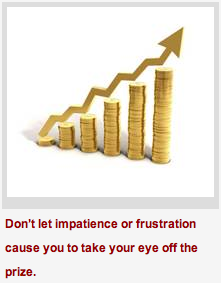 Important bottoms are characterized by:
Important bottoms are characterized by:
